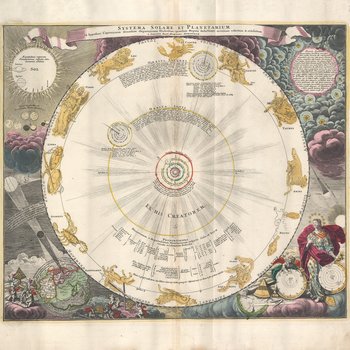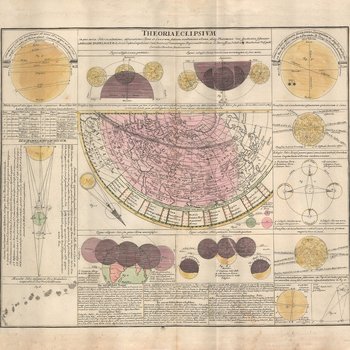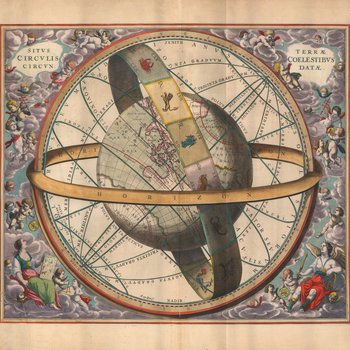Celestial Wonders: Medieval Thoughts on the Night Sky covers the evolution of scientific thinking and religious views from the Medieval period into the Scientific Revolution, with special focus on solar eclipses. Eclipses today are predictable and understood but this has not always been the case. In the Medieval era, eclipses were seen as signs from the gods to be interpreted to understand their meaning and the celestial charts show the evolution of these ideas, theories, and beliefs over time. The theories portrayed by these maps shook both the scientific and religious world causing great debates and even imprisonment of some that dared to go against the authority of the Catholic church. This project focuses on three themes of the celestial charts produced during the Scientific Revolution: astrology and mythology, the changing science, and celestial observations.
Many people believed in heavenly signs and continued to attribute many observations in the night sky to the divine messages, well into the period of the Scientific Revolution. In the Astrology and Mythology section there are a set of six spectacular celestial charts from Doppelmayr and Homann's Atlas Coelestis map series titled Globe Coelestis InTarulas Planas Redacti Pars I-VI. Created from 1716-1724 and printed in 1742, the maps were crafted and illustrated by Johann Gabriel Doppelmayer (1677-1750) and published under The Homann Firm (founded by Johann Baptist Homann (1664-1724) in Nuremberg in 1702). Together, the set forms a complete map of the heavens as viewed from different points on the earth's surface. The paths of the major comets, as observed by Halley, Kepler, Brahe, and others, are shown. The sides of the map include a list of the constellations pictured in each.
While science was rapidly progressing in the late Medieval period, the church maintained a profound influence on science, especially the concept that celestial objects revolved around the Earth (the geocentric, Ptolemaic System model). The Changing Science section explores how the understanding of the celestial sphere advanced during the Scientific Revolution. Four charts show the developing understanding of the movements of the celestial bodies. Three of these maps (published in 1660 by Andreas Cellarius) show the Ptolemaic view. Orbitum Planetarum shows the geocentric model surrounded by the zodiac signs. Planespherium Brahevm presents the Tychonic system of Brahe - where the sun revolves around the Earth and the planets around the sun. In 1712, (enter author) created Motus Planetarium Superiorium detailing the orbits of Mars, Jupiter and Saturn which includes retrogrades, or the appearance of the planets moving backward in the night sky. Phaenomena Copernicus, drawn by (author) in 1742, displays the theories of Copernicus and his Heliocentric model (in which the planets including earth revolve around the sun).




